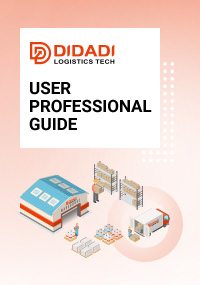How to Protect Your Product Idea and Intellectual Property When Outsourcing from China

Outsourcing production to China can give your business a major competitive edge. The country’s manufacturing ecosystem is unmatched — from small component suppliers to massive industrial clusters that can turn a product idea into a mass-produced reality in weeks. However, while cost and speed are major advantages, there’s a concern that keeps many entrepreneurs awake at night: intellectual property (IP) protection.
The fear of having your idea copied or leaked is real. Stories about “copycat factories” or unauthorized replicas on online marketplaces have made many Western companies hesitant to work with Chinese manufacturers. Yet, the truth is more nuanced. IP protection in China has improved significantly over the last decade, and with the right strategies, it is absolutely possible to manufacture safely and profitably in China.
This article explains how to protect your product idea and intellectual property when outsourcing production from China — and how a professional China 3PL partner like DIDADI Logistics can support you in this process.
Intellectual Property refers to creations of the mind — inventions, product designs, brand names, and other intangible assets that differentiate your business. In manufacturing, IP commonly includes:
Product design and technical drawings
Prototypes and material specifications
Software or embedded firmware
Brand trademarks and packaging designs
Confidential business processes or formulations
While China has historically been criticized for weak IP enforcement, the country’s legal system has evolved rapidly. Today, China has specialized IP courts, stronger penalties for infringement, and growing recognition that IP protection is vital for innovation.
Still, legal frameworks alone are not enough. The most effective IP protection comes from proactive planning and practical safeguards — before you share your idea with any manufacturer.
The biggest mistake importers make is discussing product details or sending drawings to multiple suppliers before securing protection. Once your idea is exposed, it becomes much harder to control.
Here are the key steps to take before you share your product information:
1. Register Your IP in China
Even if your trademark or patent is registered in your home country, it doesn’t automatically protect you in China. You must register it with China’s National Intellectual Property Administration (CNIPA). China follows the “first-to-file” principle, meaning whoever registers first owns the rights — even if you created it first abroad.
2. Use NDAs (Non-Disclosure Agreements)
Before revealing any design or confidential information, have your supplier sign a China-enforceable NDA. This contract should be bilingual (English and Chinese) and specify that Chinese law applies, allowing it to be enforced locally.
3. Limit Information Sharing
Only provide suppliers with the information necessary for quotations or specific tasks. For example, give design dimensions but not the full assembly details until you’ve selected a trusted partner.
4. Control Access to Key Files
Use watermarks, version control, and cloud permissions to ensure only authorized individuals can access sensitive CAD files or product drawings.
The truth is, not all Chinese factories are equal when it comes to respecting intellectual property. Choosing a reputable manufacturer is the strongest defense against IP theft.
1. Work with Verified and Established Suppliers
Reputable manufacturers — especially those who export to Western markets — have more to lose by violating IP laws. Check their background, export history, and references.
2. Avoid Overly Cheap Offers
If a supplier’s quotation is drastically lower than others, treat it as a red flag. Often, such suppliers may reuse your design or sell similar products to others to make up their margins.
3. Audit the Factory
If possible, conduct an on-site or third-party audit. Verify whether they handle multiple clients’ confidential projects securely and whether production areas are well controlled.
4. Use an Intermediary for Added Security
Instead of working directly with the manufacturer, you can work through a trusted local partner or 3PL, such as DIDADI Logistics, that can manage communication, sourcing, and inspection on your behalf. This adds a layer of accountability and reduces exposure of your full design details.
Protecting your idea isn’t only about legal documents; it’s also about structuring your production in a way that minimizes risk.
1. Split Production Stages
You can separate production steps across multiple suppliers. For example, one factory produces a component, while another handles assembly. No single supplier has access to your complete product.
2. Retain Control Over Branding and Final Packaging
Never give your manufacturer access to your brand artwork or packaging templates before final shipment. Handle final labeling and packaging through a trusted 3PL before delivery to customers or Amazon FBA.
3. Keep Sensitive Components Proprietary
If your product includes a unique microchip, formula, or code, consider producing or programming that part in your home country and shipping it to China for assembly.
4. Use OEM Contracts With IP Clauses
A well-written OEM or manufacturing agreement should clearly state ownership of tooling, molds, and designs. It should specify that all designs remain your property and cannot be used for other clients.
In many cases, the factory needs to create molds or tools to produce your parts. These molds can be expensive — and unfortunately, sometimes factories use them to make extra units for other buyers.
To prevent this, make sure your agreement includes:
Clear ownership of molds and tooling (they belong to you)
No right for the factory to use them for other clients
Option to retrieve or destroy the molds if you switch suppliers
It’s also wise to mark each mold with a unique serial number and keep records of their use.
IP protection doesn’t end once production starts. Ongoing monitoring helps ensure that your design and materials are not being altered or substituted.
Use third-party inspection agencies or a China 3PL partner to perform the following:
Pre-production sample review
In-process inspections to confirm consistency
Random sampling before shipment
Packaging verification to prevent unapproved branding changes
Consistent oversight discourages misuse and builds a stronger relationship of accountability with your supplier.
Even with the right contracts and supplier selection, managing your supply chain remotely can still expose you to risks — both logistical and intellectual. That’s why many importers partner with China-based 3PLs (Third-Party Logistics providers) such as DIDADI Logistics to add an extra layer of protection and control.
Here’s how a reliable 3PL can help safeguard your intellectual property:
1. Centralized Communication and Handling
Instead of sharing your product details with multiple forwarders or agents, a 3PL manages your logistics internally, minimizing data leakage.
2. Secure Warehousing and Consolidation
Your products can be stored and prepared in a secure facility before shipment. DIDADI Logistics, for instance, handles consolidation from multiple factories in controlled warehouses to prevent exposure of full product designs.
3. FBA Preparation and Final Packaging
By performing labeling, inspection, and packaging within a 3PL warehouse, you retain control over your branding, packaging design, and documentation — away from the manufacturer.
4. Confidentiality and Compliance
Reputable 3PLs operate under strict confidentiality agreements with clients, providing assurance that your designs and product data remain private.
5. Legal and Administrative Support
A logistics partner familiar with international trade laws can help you prepare compliant export documentation, NDAs, and shipping contracts that reinforce your IP protection strategy.
Partnering with a 3PL like DIDADI Logistics essentially gives you a local presence in China — without the need to open an office or manage multiple vendors directly.
If your IP is ever violated, acting quickly is crucial. The longer an infringement goes unaddressed, the harder it becomes to resolve.
1. Gather Evidence
Keep records of all communications, samples, and production documents. Screenshots or product listings showing infringements are valuable in legal actions.
2. Contact the Supplier First
Sometimes, issues stem from misunderstandings rather than malicious intent. A formal cease-and-desist letter may resolve the problem before escalating.
3. File a Complaint with CNIPA or Local Courts
China’s IP authorities have improved enforcement mechanisms. You can file an official complaint, and courts can issue injunctions or fines for infringement.
4. Notify Online Platforms
If counterfeit versions of your product appear on Alibaba, AliExpress, or other sites, you can report them directly. Platforms are now required to act on verified IP infringement claims.
Having a logistics or sourcing partner in China can help you navigate this process more effectively, especially when language or time zone differences make communication difficult.
At DIDADI Logistics, we understand that outsourcing is not just about moving goods — it’s about protecting innovation and brand integrity.
Our 3PL services are built to give importers full control and transparency at every stage of the supply chain:
Product inspection and secure warehousing in China
Consolidation and repackaging under client confidentiality
Amazon FBA preparation and international delivery
Coordination of DDP shipping with full documentation
Long-term supplier communication and accountability management
By acting as your trusted China-based logistics and supply chain partner, DIDADI Logistics ensures that your ideas, designs, and brand identity remain safe — while your products move efficiently from factory to market.
When you combine smart legal protection with operational safeguards and reliable local support, manufacturing in China becomes not only profitable but also secure.
Protecting your product idea when outsourcing to China requires preparation, structure, and trustworthy partnerships. Register your IP, use the right contracts, limit information sharing, and choose suppliers carefully. Most importantly, work with professionals who understand both the business culture and the legal landscape in China.
With a capable China 3PL partner like DIDADI Logistics, you can confidently manage your production and logistics while keeping your intellectual property protected at every step — from factory floor to final delivery.
Recommended Reading















